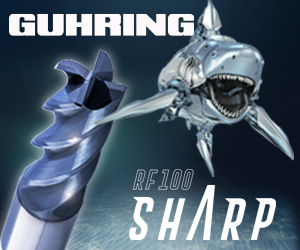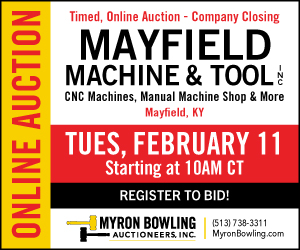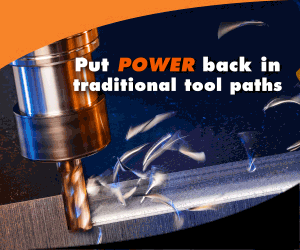Upcoming Online Short, Practical Courses
Facts: online using Zoom • one day courses from 9 a.m. to 4 p.m. Central time; and two-hour lunch courses from 11 a.m. to 1 p.m. Central time • attendance limited • opportunity for questions • focused on practical aspects to help you improve your operations now.
Goal: Give attendees a thorough, practical understanding of the subject, focused on key points and tools that enable them to make improvements immediately.
Why? For twenty years, Dr. Badger’s courses and presentations have been well known for being engaging, easy-to-understand and enormously practical. Because of Covid, he’s now offering them online in short, one-day modules. They’re a great way to drastically improve your grinding operations with very little investment.
Cost: US $195 – $495.
Includes: Handouts of course material in pdf format and The Grinder’s Toolbox program for choosing optimum parameters and speeds & feeds.
How to register: Visit the Grinding Doc's website to learn more and register for the courses.
Course 1. Cooling
Goal: Attendees come out with an understanding of how to achieve excellent coolant application in grinding, including when good cooling is necessary and when it can actually be harmful. In most applications, attendees will learn how to modify their existing coolant system in a few hours to reduce temperatures, reduce loading, extend wheel life and reduce or eliminate visible oxidation burn.
Length: 1 day (9 a.m. to 4 p.m. Central time)
Cost: US$ 395
Topics: When do you need good cooling? When don’t you? • When can good cooling actually cause problems? • Pressure? Flowrate? Aim? What is most important? • Nozzles: What are my options? Can I make my own? • Crimped-down metal tubes: Quick, easy & effective • Coolant hydroplaning, cause of taper, other problems • Cleaning nozzles: Are they worth it? Common mistakes; when to use; how to use • Using The Grinder’s Toolbox to create an effective cooling system • Application for specific operations: creep-feed for the aerospace industry, flute grinding in tooling, cylindrical grinding, camshaft grinding, crankshaft grinding, bearing grinding, centerless grinding.
Included:
1. TheGrinder’s Toolbox Cooling Module, emailed to attendees.
2. Handouts, emailed to attendees in pdf format.
Note: The course covers coolant application, it does not cover coolant chemistries.
Course 2. Carbide Grinding
Goal: Give attendees a thorough understanding of the unique aspects of carbide grinding, allowing them to increase feedrates, reduce wheel wear and cope with loading.
Length: 1 day (9 a.m. to 4 p.m. Central time)
Cost: US$ 395
Topics: Mechanisms: how carbide is different • Wheel loading: How do cope with it • Sweet-spot & increasing feedrates • Sticking: common mistakes • Cleaning nozzles: Do they work? • Hybrid-bond G-force-style wheels, Paradigm metal-bond wheels: How to use them • Using aggressiveness to increase feedrates and reduce wheel wear • Evaluating wheels scientifically (rather than trial & error) • Wheel sticking: Do it right or don’t bother • Wheel truing: Why it’s taking you so long, how to fix that • Wheel balancing: Is it necessary? • Flute grinding of carbide: case studies • sawblade grinding of carbide: case studies • cylindrical grinding of carbide: case studies.
Included:
1. TheGrinder’s Toolbox Surface Grinding Module, emailed to attendees.
2. TheGrinder’s Toolbox Cylindrical Grinding Module, emailed to attendees.
3. Handouts, emailed to attendees in pdf format.
Course 3. Cylindrical Grinding
Goal: Give attendees a thorough understanding of cylindrical-plunge grinding and cylindrical-traversegrinding, enabling them to increase feedrates, eliminate chatter, increase form-holding and deal with burning (particularly on problematic shoulders).
Length: 1 day (9 a.m. to 4 p.m. Central time)
Cost: US$ 495
Topics: How cylindrical grinding is different • Shoulder grinding without a swivel, how to cope with burn • Shoulder grinding with a swivel, how to cope with burn • Finding the sweet spot, how to increase feedrates with it • Burn: most likely causes, changing speeds & feeds to eliminate it • Workpiece RPM for burn, for chatter, for wheel wear • Overlap Ratio in traverse, using it to drastically reduce cycle time in roughing • Barber Pole in cylindrical traverse • Barreling in cylindrical traverse • Bell-mouth/taper in cylindrical plunge • Improving cooling: What it helps, when it hurts • Lobing: How to reduce it via “integer values” • Self-excited chatter: Causes, how to eliminate it • Fishscale chatter: How to eliminate it • Using The Grinder’s Toolbox in cylindrical-plunge grinding • Using The Grinder’s Toolbox in cylindrical-traverse grinding.
Included:
1. The Grinder’s Toolbox Surface Grinding Module, emailed to attendees.
2. The Grinder’s Toolbox Cylindrical Grinding Module, emailed to attendees.
3. Handouts, emailed to attendees in pdf format.
Note: The course does not cover centerless grinding or peel grinding.
Course 4. Diamond Dressing
Goal: Give attendees a thorough understanding of diamond dressing – stationary, plunge-roll and diamond disc. Explain common mistakes and how incorrect dressing is a predominant cause of grinding burn.
Length: 1 day (9 a.m. to 4 p.m. Central time)
Cost: US$ 395
Topics: Dressing, primary cause of grinding burn, how & why • Dressing depth, correct values • Velocity, diamond wear & overlap ratio, common mistakes • Single point, pitfalls, compared to blade, cluster, chisel, etc. • Wear spot, how it affects sharpness, transient nature • Diamond carat size • Rotary dressing speed • Ratio, sharp or dull, common mistakes • Plunge roll effective depth, common mistakes, especially in aerospace applications • Plunge roll dwell time • Traverse diamond disc, wear spot • Rotary dressing of CBN • Kamikaze attack angle • The Integer-Egg effect, cause of fish-scale chatter, straight-line chatter • Using The Grinder’s Toolbox to determine wheel sharpness and avoid wheel lobing.
Included:
1. The Grinder’s Toolbox Stationary-diamond Module, emailed to attendees.
2. The Grinder’s Toolbox Plunge-roll Module, emailed to attendees.
3. The Grinder’s Toolbox Diamond-disc Module, emailed to attendees.
4. Handouts, emailed to attendees in pdf format.
Note: The course does not cover truing of superabrasive wheels with SiC/AlOx.
Course 5. Grinding Burn
Goal: Give attendees a thorough understanding of thermal damage & “grinding burn” in ferrous materials (steel & stainless steel) and nickel alloys (Inconels, etc.) and the tools and knowledge to reduce or eliminate it.
Length: 1/2 day (8:00 a.m. to 12:00 p.m. CST)
Cost: US$ 295
Topics: Oxidation burn vs. genuine thermal damage • Overtempering • Residual compressive stresses • Residual tensile stresses • Rehardening • Effect on fatigue life • Cracking in brittle materials • Test methods • Nital etching • Barkhausen • Hot-acid cooking • Cooling for oxidation burn vs. genuine thermal damage • Primary cause of thermal damage • Effect of improved cooling • How to reduce or eliminate thermal damage.
Value: Reduced scrap caused by “grinding burn” will pay for this course almost immediately.
Limit: 5 attendees/viewers per registration/login.
Included: Handouts, emailed to attendees in pdf format.
Lunch 1. Using Ceramic/SG Abrasives
Goal: Give attendees a thorough understanding of microfracturing “ceramic” SG/Cubitron-style abrasive: how it works, when to use it, when not to use it, and what speeds & feeds will make it work effectively.
Format: Long Lunch. Bring your engineers & machine operators in early, order-in sandwiches or pizza, and give them the most educational two hours of their life – with useful tools they can use on the shop floor immediately.
Length: 2 hours (11 a.m. to 1:00 p.m. CST)
Cost: US$ 195
Topics: Who has “ceramic grit”, in what wheels (Norton-SG, Cubitron, Cubitron II, Noritake, Quantum, etc.) • How to get it to microfracture • When to use it • When not to use it • Norton TG, how it’s different, when to use it • Cubitron II, how it’s different, when to use it • Quantum • Calculating Aggressiveness values to get it to microfracture instead of dull • Cost • Impact on diamond wear.
Value: Will keep you from wasting time on this product if you don’t need it, will help you capitalize on it if you do – and reduce cycle times.
Limit: 5 attendees/viewers per registration/login.
Included:
1. The Grinder’s Toolbox.
2. Handouts, emailed to attendees in pdf format.
Lunch 3. Increasing Feedrates
Goal: Teach attendees how to increase feedrates while minimizing the typical corresponding increased risk of thermal damage and excessive wheel wear – using the concept of Aggressiveness.
Length: 2 hours (11:00 a.m. to 1:00 p.m. CST)
Cost: US$ 195
Topics: Why increasing feedrates alone usually causes problems • The fundamental concepts of grit penetration depth and aggressiveness • How to keep Aggressiveness constant while increasing feedrates • What the limits are, usually temperature, machine power and deflection • How to mitigate these limits • How to use The Grinder’s Toolbox to maintain Aggressiveness, both in surface grinding and cylindrical grinding.
Value: Even modest increases in feedrates will pay for the price of the course almost immediately.
Limit: 5 attendees/viewers per registration/login.
Included:
1. The Grinder’s Toolbox.
2. Handouts, emailed to attendees in pdf format.
Lunch 4. CBN on Steels & Nickel Alloys
Goal: Give attendees an understanding of CBN and how to reduce cycle times and increase dressing intervals.
Length: 2 hours (11:00 a.m. to 1:00 p.m. CST)
Cost: US$ 195
Topics: CBN wheel break-in after dressing, why you need to understand this • How to extend dressing intervals • Common mistake – and how it causes grinding burn and/or short dressing intervals • Wheel specification: grit size, grit type, bond type, grade, when to change • When to switch from AlOx to CBN, when not to bother • Dressing CBN • Water-based coolant vs. Oil coolant, why you need to understand this.
Value: Common mistakes cost companies thousands of dollars. Learn these – and the course will pay for itself almost immediately.
Note: If you’re using electroplated or brazed CBN, take the electroplated class, not this one.
Limit: 5 attendees/viewers per registration/login.
Included: Handouts, emailed to attendees in pdf format.
Lunch 5. Electroplated Wheels
Goal: Give attendees a thorough understanding of grinding with electroplated and brazed wheels.
Length: 2 hours (11:00 a.m. to 1:00 p.m. CST)
Cost: US$ 195
Topics: How they work • The dangerous of rogue grits • Extending wheel life • Common mistakes • Water-based coolant vs. oil coolant: pain & suffering • Mistakes when choosing grit size • Tolerances & conditioned wheels: are they for you? • Extending wheel life drastically via run-out • The old chunk-of-wood-&-hammer technique • Sticking for loading.
Value: Several of my customers have corrected one of three common mistakes, increasing wheel life three times (mistake 1 or 2) or over ten times (mistake 3).
Note: Course applies to both CBN & Diamond wheels.
Limit: 5 attendees/viewers per registration/login.
Included: Handouts, emailed to attendees in pdf format.
Lunch 6. Chatter in Cylindrical Grinding
Goal: Give attendees (1) an understanding of both self-excited and forced chatter in cylindrical-plunge and cylindrical-traverse grinding and (2) tools to reduce or eliminate chatter.
Length: 2 hours (11:00 a.m. to 1:00 p.m. CST)
Cost: US$ 195
Topics: Types: forced & unforced • Determining cause by pattern • Imbalance, out-of-true, snakeskin, fishscale & gun-barrel chatter • Natural frequencies • RPM ratios • Quick fix 1: workpiece RPM • Quick fix 2: wheel RPM • Variable RPM feature: does it work? • Wavelength obliteration.
Value: Solving even a single chatter problem can eliminate hours of costly trial-&-error.
Notes: Course does not address chatter in centerless grinding.
Limit: 5 attendees/viewers per registration/login.
Included: Handouts, emailed to attendees in pdf format.
Lunch 8. Surface Grinding
Goal: Teach attendees techniques to reduce cycle times, wheel wear and chatter in surface grinding.
Length: 2 hours (11:00 a.m. to 1:00 p.m. CST)
Cost: US$ 195
Topics: Determining cutting width in roughing, in finishing, and use it to cut cycle time • Deeper depth of cut or faster feedrate? • Changing wheel speed with increasing feedrates • The rough-rough/ finish-finish technique to cut cycle times in large parts • Gradual plunge vs. incremental plunge: use the right one & cut cycle time in half • Gradual cross-feed vs. incremental cross-feed: use the right one & cut your cycle time in half • Chatter: how to reduce it.
Value: One course attendee reported back, “The day I got back I cut my surface-grinding operation from six hours to two hours. This will save me huge labor costs.”
Limit: 5 attendees/viewers per registration/login.
Included:
1. The Grinder’s Toolbox – surface grinding.
2. Handouts, emailed to attendees in pdf format.







